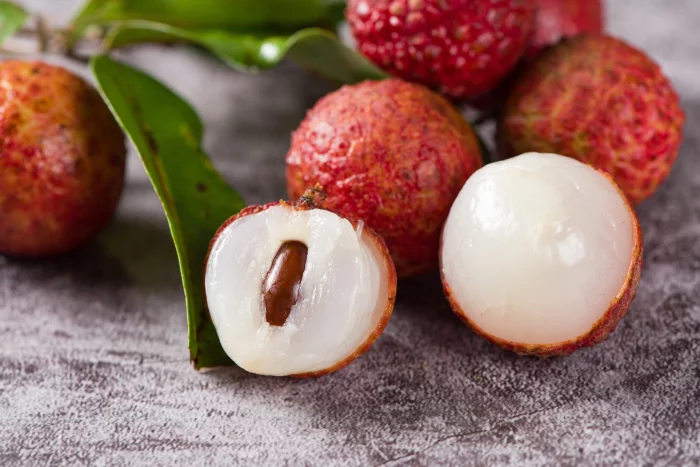Seoul is a city where culinary tradition and Michelin-star excellence coexist. Here, comfort food is not just a matter of filling one’s stomach – it evokes the warmth of home, childhood memories, and a deep connection to South Korea’s rich cultural heritage.
For the nation’s leading chefs, classic dishes shape their approach to modern cuisine. From nourishing broths to noodle soups, these time-honored staples reflect the culinary identity of Korea. Six renowned chefs from across Seoul and beyond share their personal comfort food picks and recommend the best places in the city to savor them.
Kang Mingoo, Mingles (Seoul) Kang Mingoo, the chef-owner of the three-Michelin-star restaurant Mingles, has a deep affection for kalguksu (knife-cut noodles) and jeon (pan-fried fritters). As a child, Sundays were special for Kang, who would visit a sauna with his father and younger brother and then enjoy a hot bowl of kalguksu at Hansung Kalguksu in Gangnam. The dish, served in a light anchovy broth, became a cherished part of his childhood.
Today, Kang’s preferred version of kalguksu includes seafood, and he enjoys it with jeon, especially codfish and squash varieties, which are lightly fried until golden. Kalguksu became popular in Korea during the 1960s and ’70s as the government promoted flour-based dishes to reduce dependence on rice. Restaurants often serve it alongside various types of kimchi, which vary greatly depending on the region.
Son Jong-won, Eatanic Garden and L’Amant Secret (Seoul) For Son Jong-won, head chef of the one-Michelin-star restaurants Eatanic Garden and L’Amant Secret, comfort food always meant guk – traditional Korean soups. Growing up overseas, Son would return to Korea for vacations and head straight to a soup restaurant with his family. One of his favorites is sundaeguk – a pork bone broth with blood sausage – served with rice and salted shrimp at Bokdoni in Gangnam.
Son values the simplicity and heartiness of Korean soups, noting that guk (broth) and bap (rice) form the foundation of a typical Korean meal. While he generally avoids spicy food, he finds the comforting, rich flavors of sundaeguk particularly soothing when he feels exhausted or down.
Sun Kim, Restaurant Meta (Singapore) For Sun Kim, chef of two-Michelin-star Meta in Singapore, haemultang – a spicy seafood hotpot – is the ultimate comfort food. Made from fish bones and dried seafood, haemultang is traditionally served with fresh seafood, chilli powder, garlic, and minari (water dropwort). Sun’s family would enjoy the dish on paydays, and it remains a favorite today.
Sun recommends DongHae Haemultang in Seoul, a place he’s been visiting since he was 15. He particularly enjoys their agujjim – steamed monkfish mixed with chilli sauce, bean sprouts, and a variety of seafood.
Junghyun Park, Atoboy, Atomix, and Naro (New York) Chef Junghyun Park, the owner of Atoboy, Naro, and two-Michelin-star Atomix in New York, has fond memories of Pyongyang naengmyeon (buckwheat noodles in cold broth) from his time in Korea. Originating from North Korea’s capital, this dish combines a delicate beef broth with dongchimi (radish water kimchi), topped with slices of boiled beef. Park appreciates the balance of flavors – a subtle broth paired with chewy noodles – making it a dish he craves.
When Park visits Korea, he always seeks out naengmyeon at Woo Lae Oak in Seoul, a long-standing restaurant renowned for this cold noodle dish.
Jungsik Yim, Jungsik (New York and Seoul) Chef Jungsik Yim, whose namesake restaurant Jungsik holds three Michelin stars in New York and two in Seoul, considers gomtang (Korean beef bone soup) one of his all-time favorites. For Yim, the ritual of pouring rice into the steaming beef broth and pairing it with crispy kimchi is pure comfort. Yim’s childhood memories of his mother’s gomtang were so impactful that they led him to open Gomtang Lab in Seoul, dedicated to this beloved dish.
Yim recommends Mapo Ok, located in Mapo district, as the place to experience his preferred gomtang. Here, diners can enjoy a variety of kimchi, along with their hearty beef broth. Yim’s tradition includes adding red pepper flakes to the dish for an extra kick.
Dae-chun Kim, Toc Toc and 7th Door (Seoul) Dae-chun Kim, chef-owner of Toc Toc and the one-Michelin-star 7th Door, finds comfort in namul – wild Korean vegetables. Traditionally, these vegetables were a staple when meat was scarce in Korea. Kim particularly favors samnamul (goatsbeard), a vegetable he first encountered on the remote island of Ulleungdo. This unique variety of namul captivated him with its deep, earthy flavor, reminding him of Korea’s culinary history.
Kim has spent three years sourcing and drying high-quality samnamul to preserve it. He now serves it at his new restaurant, Bium, which offers a variety of vegetable-based dishes. Kim hopes to inspire a new appreciation for plant-based traditions that have been part of Korean cuisine for centuries.
These chefs’ personal stories highlight the emotional connection between comfort food and culture. In a city teeming with fine dining and modern culinary trends, these dishes remain a lasting testament to the flavors that have shaped Korean cuisine for generations.
Related topics

























